Abstract
The ability to name object-drawings, measured by score and response latency, was examined in men with chronic, focal brain lesions due to missile injury. The group with left hemisphere lesions was significantly impaired on both measures and this impairment was clearly related to the incidence of clinically detectable dysphasia. In contrast, the impairment of the bilateral group was not closely associated with dysphasia; it was characterized by long response latencies which exceeded the sum of unilateral deficits in the task. Analysis of response errors showed that both misnaming and misidentification occurred but were often dissociated. Difficulty in naming was noted in men with lesions involving the left temporal lobe. Misidentification was not common; it occured more frequently in the bilateral group, in men with lesions of the occipital areas of the brain. Dissociated deficits were also noted within the group of men with residual dysphasia.
Full text
PDF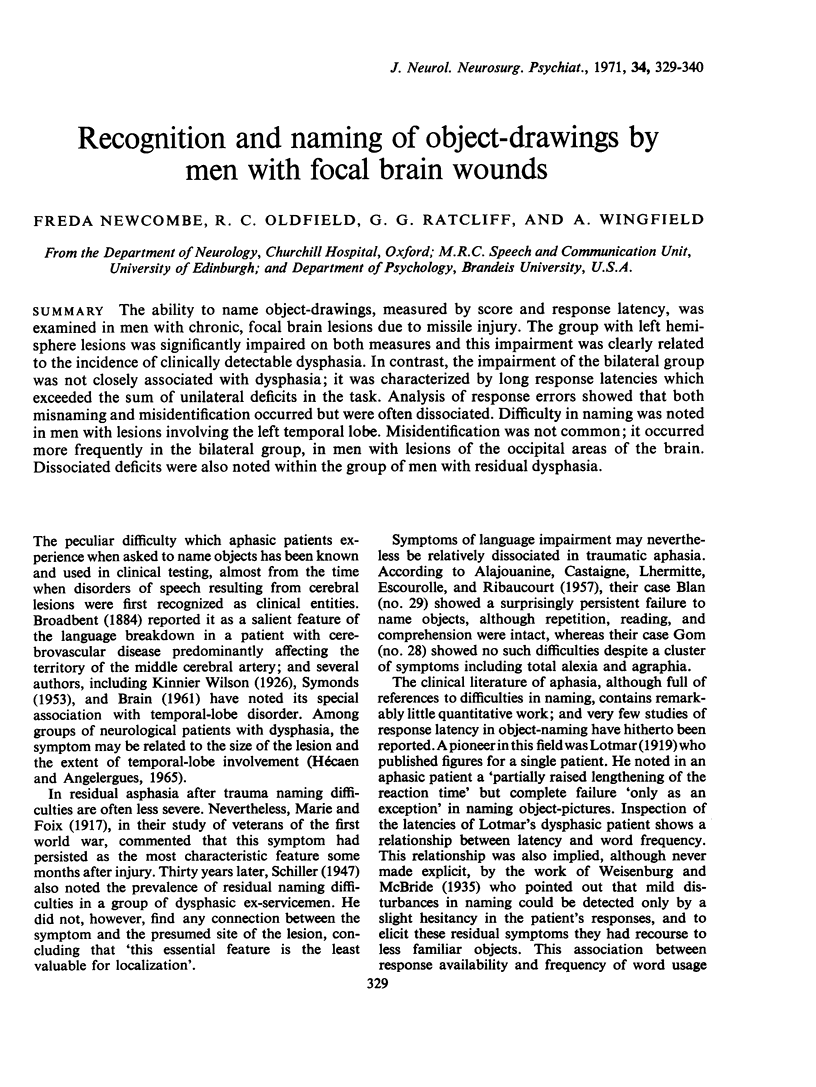
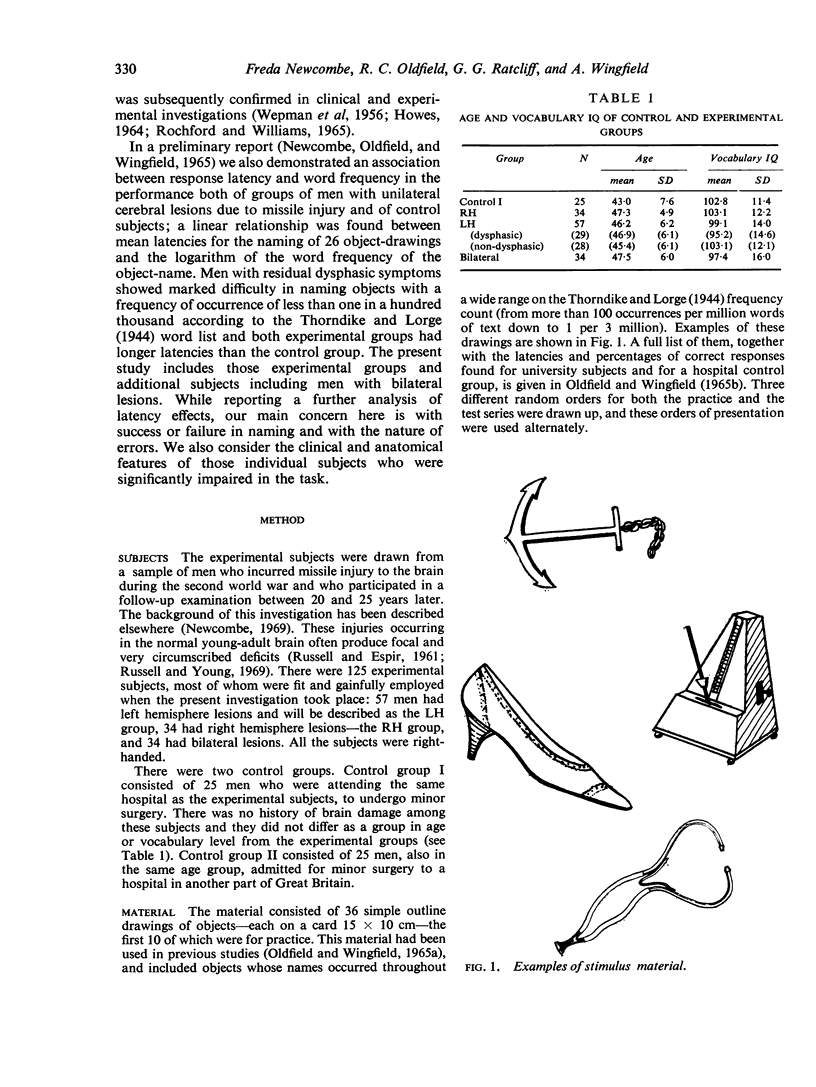
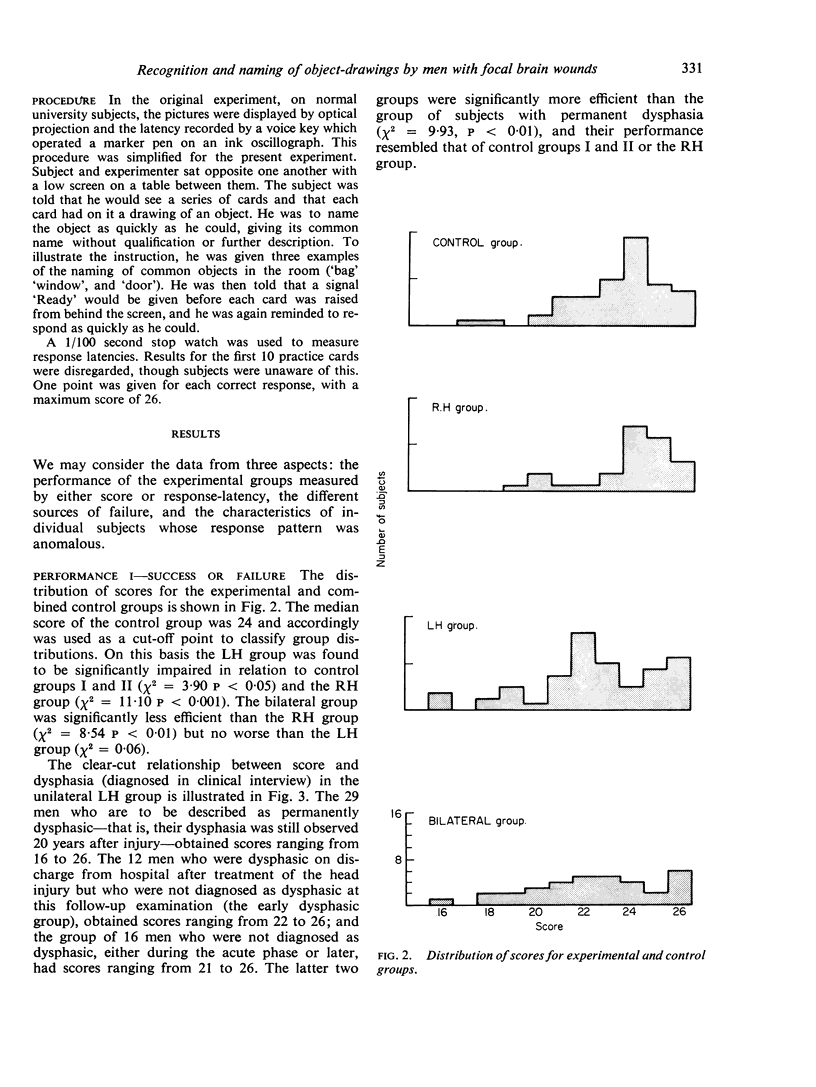
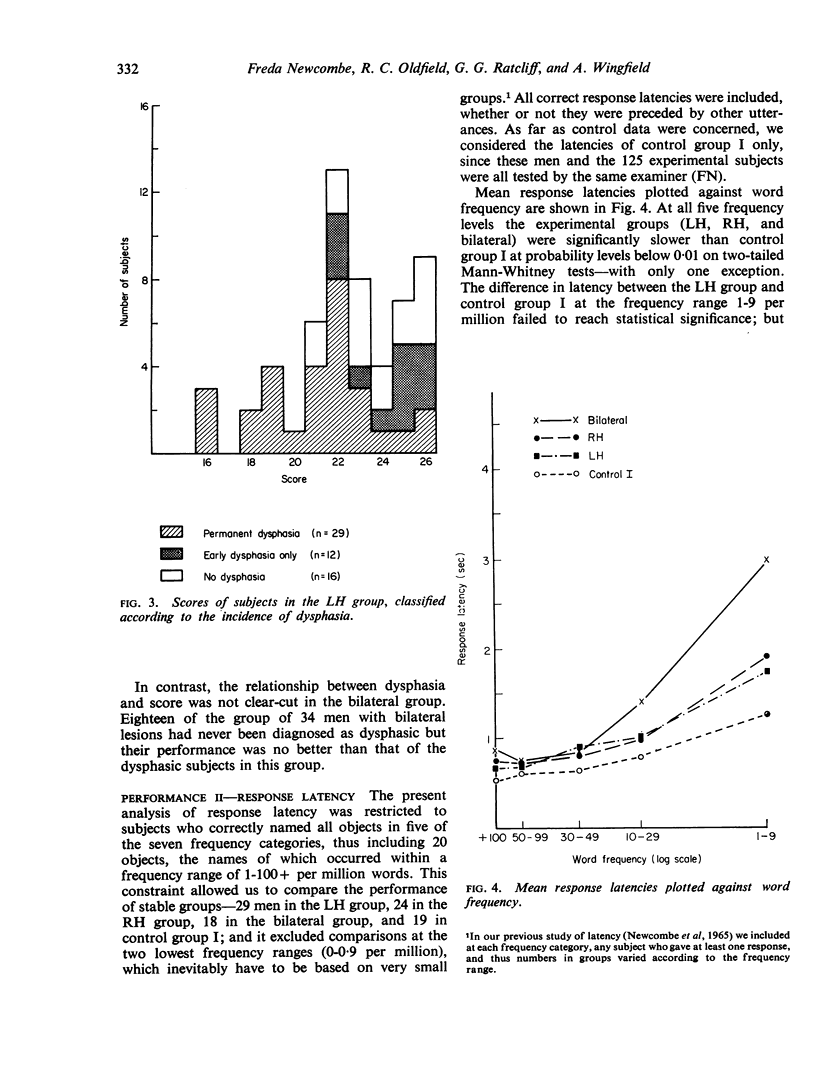
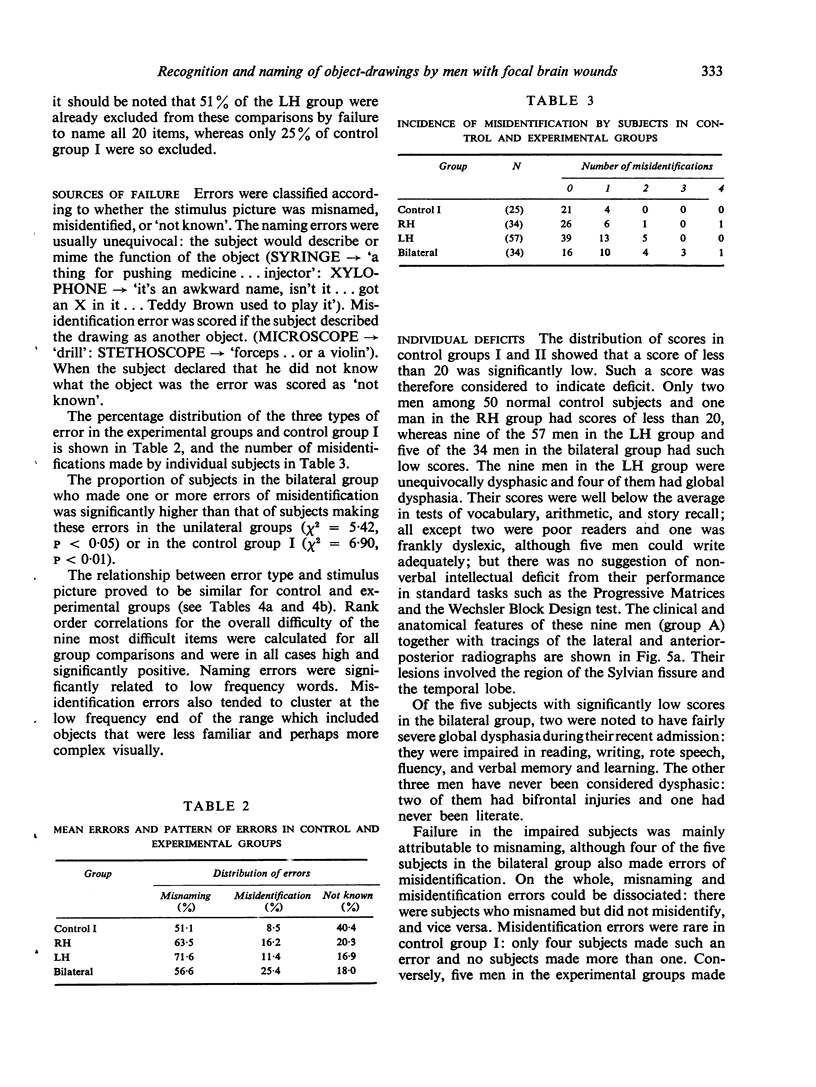
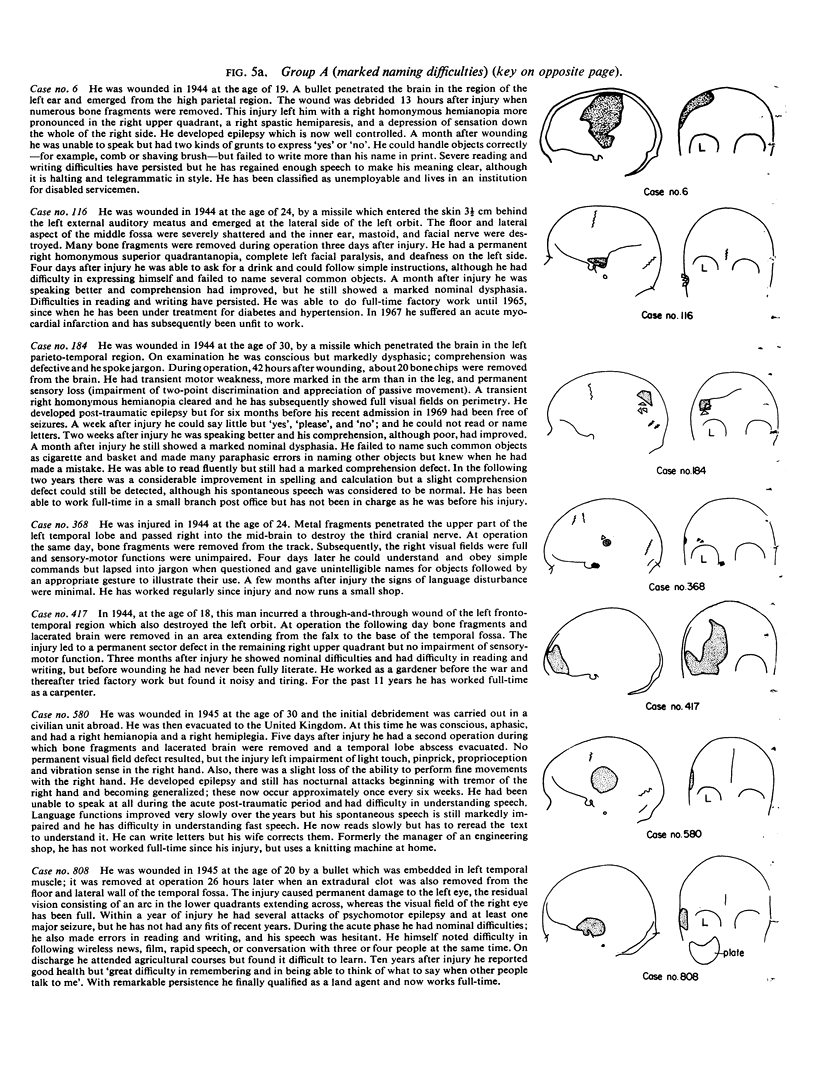
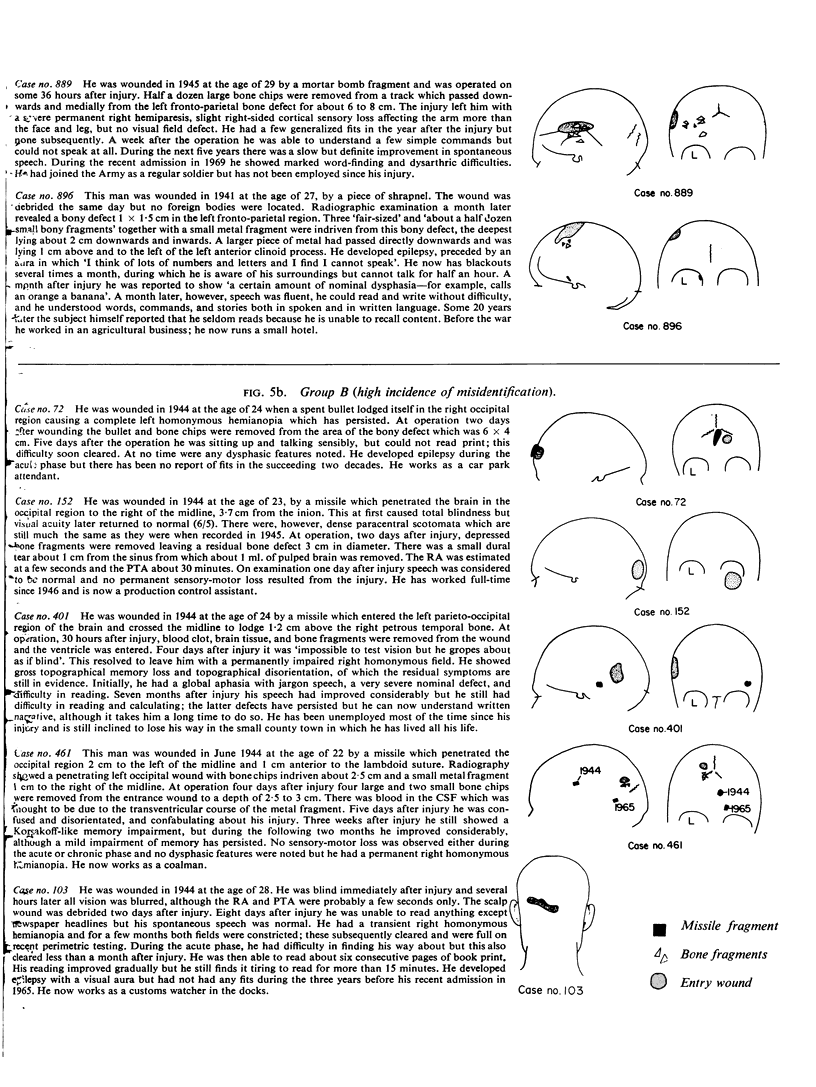
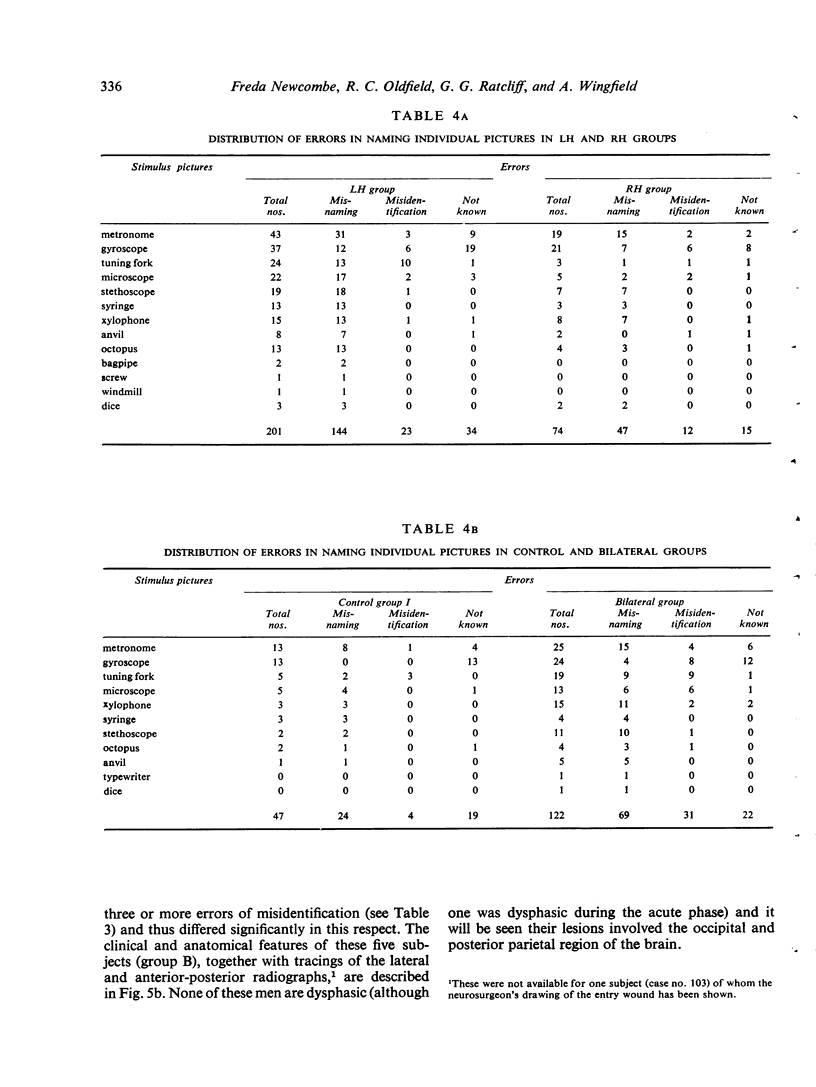
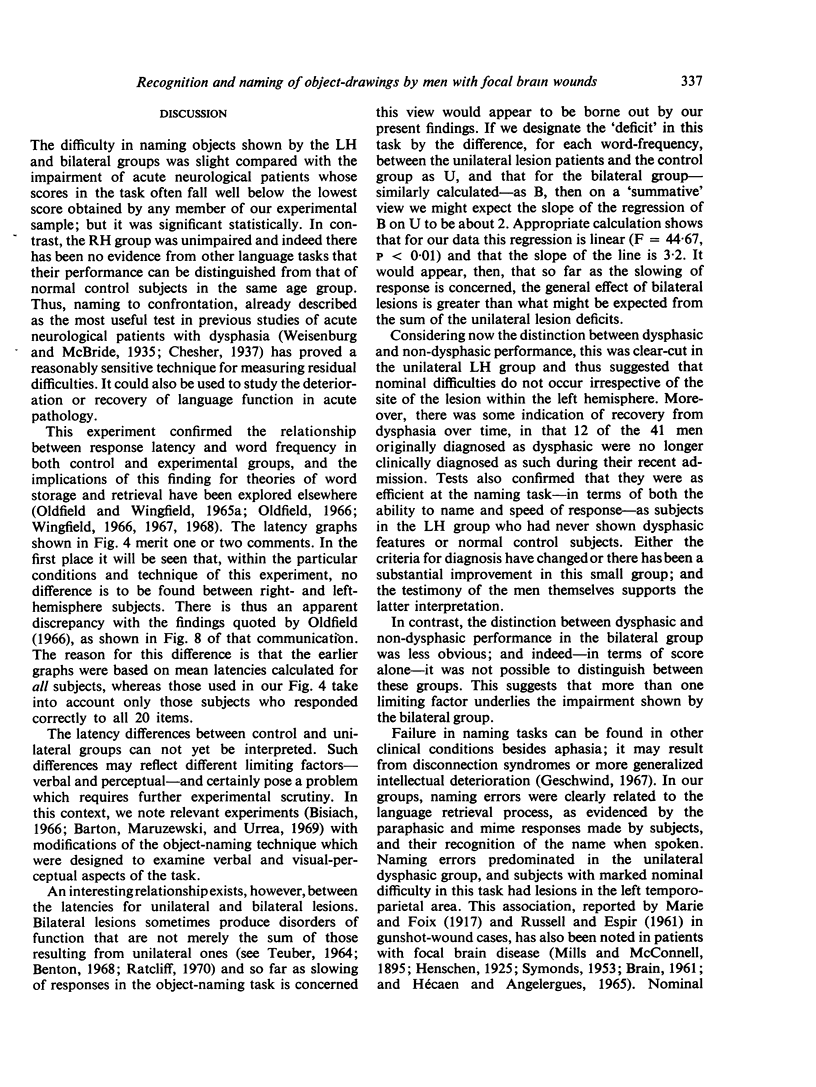
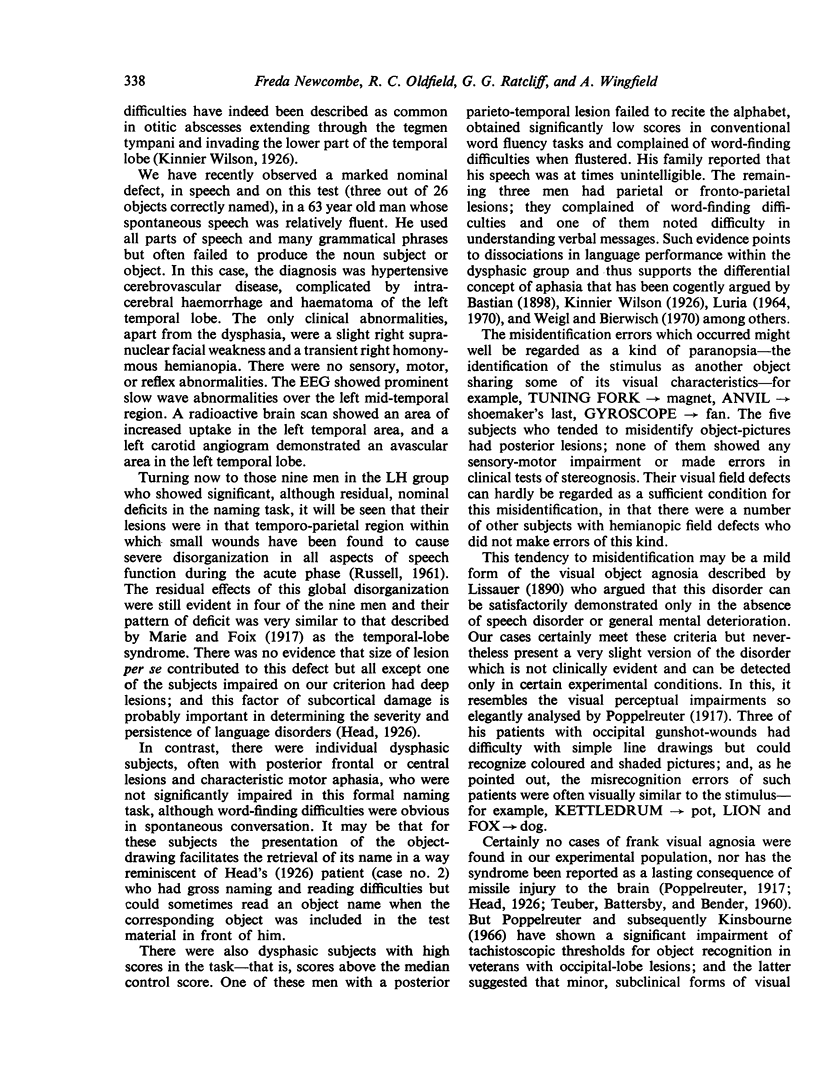
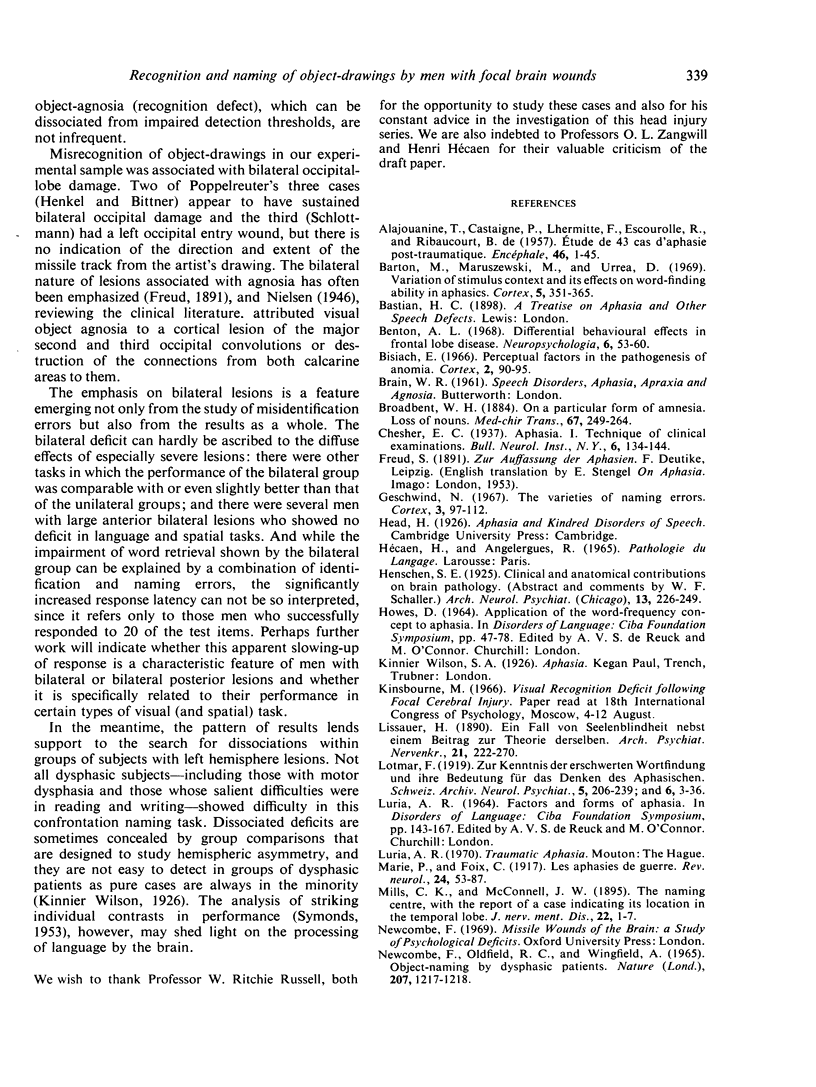
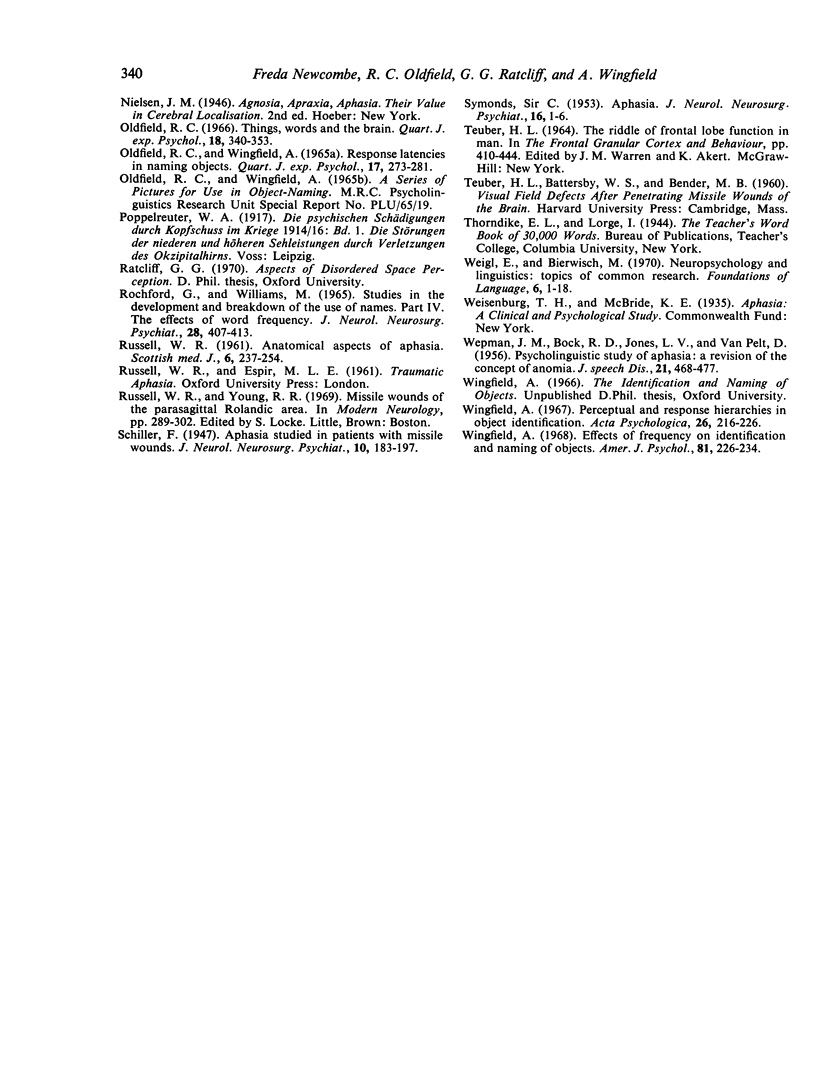
Selected References
These references are in PubMed. This may not be the complete list of references from this article.
- ALAJOUANINE T., CASTAIGNE P., LHERMITTE F., ESCOUROLLE R., DE RIBAUCOURT B. Etude de 43 cas d'aphasie post-traumatique; confrontation anatomo-clinique et aspects évolutifs. Encephale. 1957;46(1):1–45. [PubMed] [Google Scholar]
- BOCK R. D., JONES L. V., VAN PELT D., WEPMAN J. M. Psycholinguistic study of aphasia: a revision of the concept of anomia. J Speech Hear Disord. 1956 Dec;21(4):468–477. doi: 10.1044/jshd.2104.468. [DOI] [PubMed] [Google Scholar]
- Barton M., Maruszewski M., Urrea D. Variation of stimulus context and its effect on word-finding ability in aphasics. Cortex. 1969 Dec;5(4):351–365. doi: 10.1016/s0010-9452(69)80013-4. [DOI] [PubMed] [Google Scholar]
- Newcombe F. B., Oldfield R. C., Wingfield A. Object-naming by dysphasic patients. Nature. 1965 Sep 11;207(5002):1217–1218. doi: 10.1038/2071217a0. [DOI] [PubMed] [Google Scholar]
- Oldfield R. C. Things, words and the brain. Q J Exp Psychol. 1966 Nov;18(4):340–353. doi: 10.1080/14640746608400052. [DOI] [PubMed] [Google Scholar]
- Oldfield R. C., Wingfield A. Response latencies in naming objects. Q J Exp Psychol. 1965 Nov;17(4):273–281. doi: 10.1080/17470216508416445. [DOI] [PubMed] [Google Scholar]
- RUSSELL W. R. Anatomical aspects of aphasia. Scott Med J. 1961 Jun;6:237–254. doi: 10.1177/003693306100600601. [DOI] [PubMed] [Google Scholar]
- Rochford G., Williams M. Studies in the development and breakdown of the use of names. IV. The effects of word frequency. J Neurol Neurosurg Psychiatry. 1965 Oct;28(5):407–413. doi: 10.1136/jnnp.28.5.407. [DOI] [PMC free article] [PubMed] [Google Scholar]
- Wingfield A. Effects of frequency on identification and naming of objects. Am J Psychol. 1968 Jun;81(2):226–234. [PubMed] [Google Scholar]
- Wingfield A. Perceptual and response hierarchies in object identification. Acta Psychol (Amst) 1967 Oct;26(3):216–226. doi: 10.1016/0001-6918(67)90019-4. [DOI] [PubMed] [Google Scholar]


